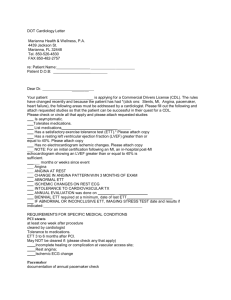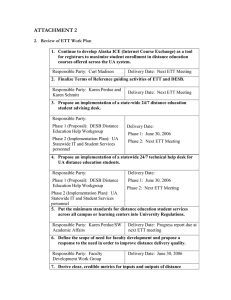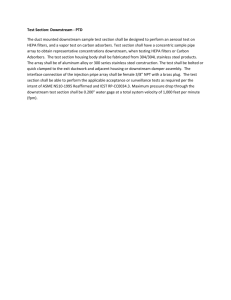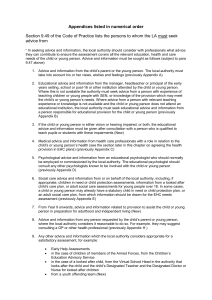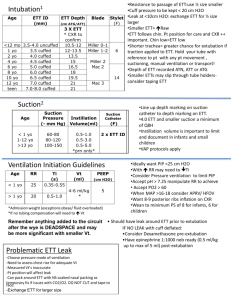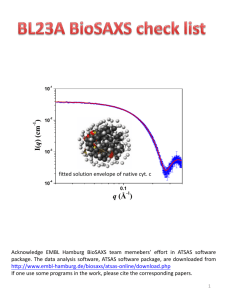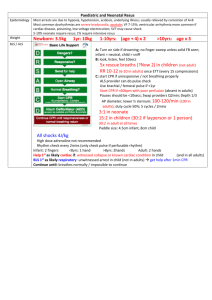Table of Contents
advertisement
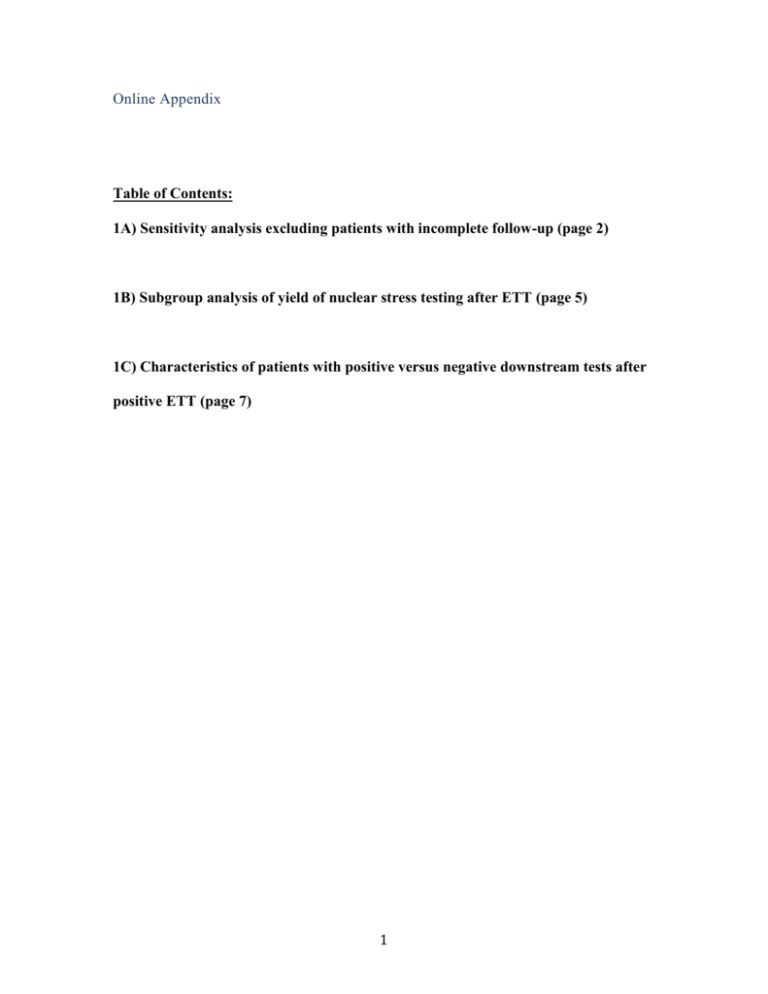
Online Appendix Table of Contents: 1A) Sensitivity analysis excluding patients with incomplete follow-up (page 2) 1B) Subgroup analysis of yield of nuclear stress testing after ETT (page 5) 1C) Characteristics of patients with positive versus negative downstream tests after positive ETT (page 7) 1 Appendix 1A We conducted a sensitivity analysis on the frequency and results of downstream testing excluding patients lost to follow-up for cardiovascular events. All results were unchanged. 2 3 4 5 6 Appendix 1B We repeated our analysis after excluding the patients who had cardiac computed tomography (n = 17), cardiac magnetic resonance (n = 6), and stress echocardiography (n = 39) as part of their follow-up testing. The results remain unchanged and the differences in survival stratified by exercise treadmill test (ETT) results were unchanged, as shown in the two figures below. ECG = electrocardiography; MI = myocardial infarction; CV = cardiovascular. Appendix 1B, Figure 1: 7 Appendix 1B, Figure 2: 8 Appendix 1C We compared characteristics of patients with positive versus negative downstream tests after positive exercise treadmill test (ETT) and found that a higher proportion of patients with positive downstream tests after positive ETT were male, older, and had a lower Duke Treadmill Score and typical angina during ETT, as tabulated below. Appendix 1C, Table 1: Characteristics of Patients With Positive Versus Negative Downstream Tests After Positive ETT –p Value Positive Downstream Negative Downstream Test (n = 37) Test (n = 57) Male 25 (68%) 23 (40%) 0.010 Age, years (SD) 64 (11) 59 (11) 0.033 Hypertension 20 (54%) 32 (56%) 0.842 Diabetes 6 (16%) 7 (12%) 0.589 Hyperlipidemia 15 (40%) 29 (51%) 0.326 Current smoker 6 (16%) 7 (12%) 0.589 Family history of CAD 17 (46%) 31 (54%) 0.424 BMI (SD) 28.3 (5.1) 26.7 (6.6) 0.219 9 Morise score (SD) 12.9 (3.9) 11.7 (4.9) 0.222 Morise pre-test 47.3% 42.5% 0.320 METs (SD) 8.8 (2.7) 10.0 (3.1) 0.062 Duke Treadmill Score –2.9 (6.3) 0.5 (4.2) 0.003 11 (30%) 29 (50%) 0.043 15 (40%) 11 (19%) 0.024 2 (5%) 1 (2%) 0.325 Dyspnea during test 9 (24%) 14 (24%) 0.979 Other symptoms during 12 (32%) 9 (15%) 0.058 probability of CAD (SD) No symptoms during test Typical angina during test Atypical angina during test test ETT = exercise treadmill test; SD = standard deviation; CAD = coronary artery disease; BMI = body mass index; METs = metabolic equivalents of task. 10
